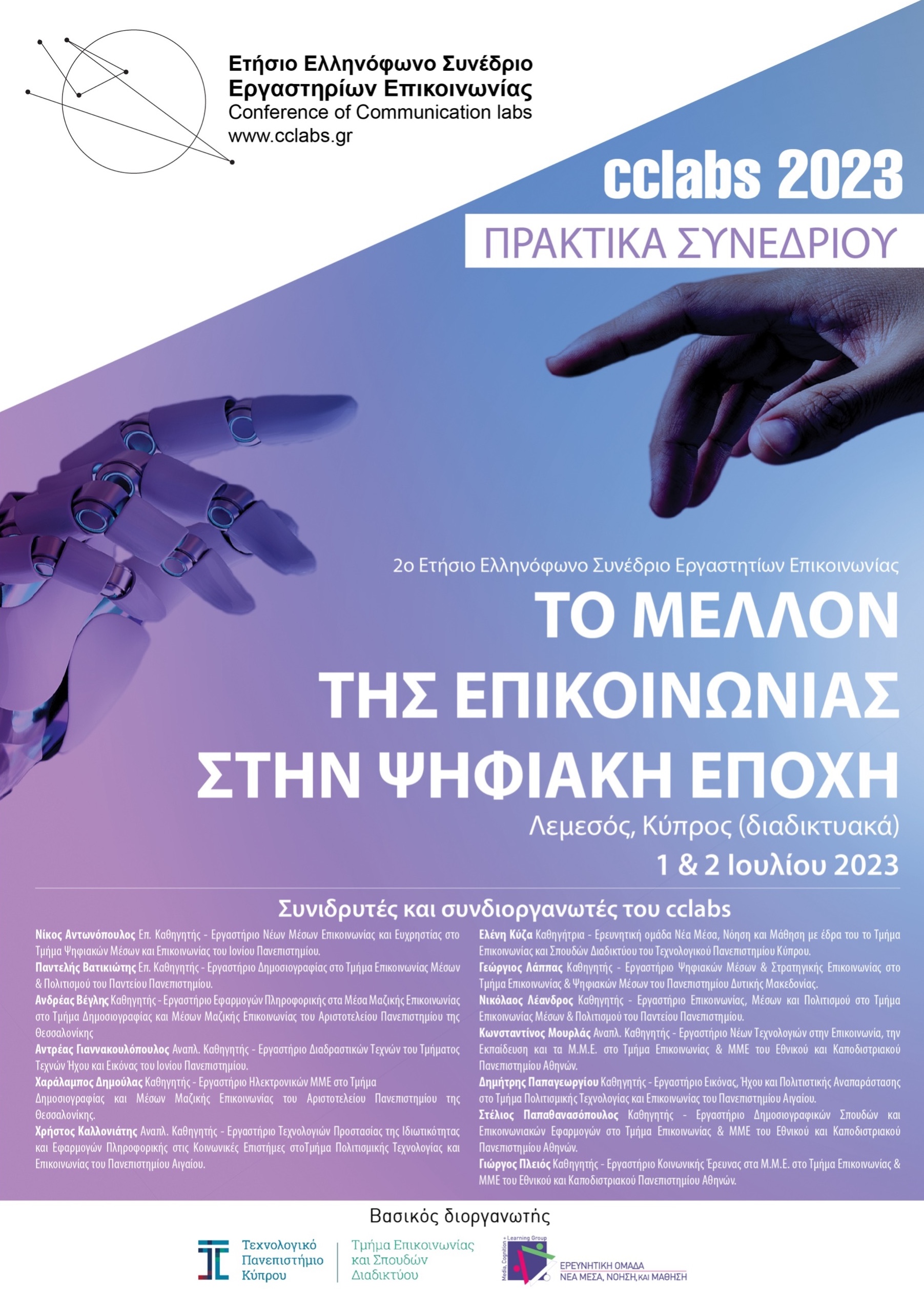Τεχνητή νοημοσύνη και συμμετοχικά μέσα: Τεχνολογίες, δεοντολογία και η ανάγκη γραμματισμού

Περίληψη
Η αυξανόμενη ενσωμάτωση εφαρμογών τεχνητής νοημοσύνης σε όλες σχεδόν τις πτυχές της καθημερινής, ακαδημαϊκής και εν γένει επαγγελματικής ζωής καθιστά ιδιαίτερα επίκαιρη την ανάγκη μελέτης, όχι μόνο των τεχνολογιών στις οποίες εδράζεται, αλλά και των ζητημάτων δεοντολογίας και γραμματισμού που αναπόφευκτα ανακύπτουν. Πλήθος συμμετοχικών περιβαλλόντων αναδιαμορφώνονται υπό το φως των ταχύτατα εξελισσόμενων δυνατοτήτων της τεχνητής νοημοσύνης, και στα οποία δεσπόζουν δημοσιογραφικά εργαλεία και μέσα επικοινωνίας. Η παρούσα εργασία έχει ως σκοπό να μελετήσει τις προκλήσεις που γεννούν τα νέα αυτά δεδομένα, επισημαίνοντας τους κινδύνους που ελλοχεύουν, τόσο στο αρχικό στάδιο του σχεδιασμού των λειτουργιών όσο και μετέπειτα κατά την εφαρμογή των υπηρεσιών. Στη συνέχεια, επιχειρεί να εξετάσει το δεοντολογικό πλαίσιο που διαμορφώνεται σταδιακά σε διεθνές επίπεδο κατά τη διάρκεια των τελευταίων ετών. Τέλος, τονίζεται ο σημαίνων ρόλος του γραμματισμού και της εκπαίδευσης, με στόχο τη διεπιστημονική προσέγγιση κατά την ανάλυση και κατανόηση της τεχνητής νοημοσύνης.
Λεπτομέρειες άρθρου
- Πώς να δημιουργήσετε Αναφορές
-
Σαρίδου Θ., & Δημούλας Χ. (2024). Τεχνητή νοημοσύνη και συμμετοχικά μέσα: Τεχνολογίες, δεοντολογία και η ανάγκη γραμματισμού. Ετήσιο Ελληνόφωνο Επιστημονικό Συνέδριο Εργαστηρίων Επικοινωνίας, 2(1), 1–11. https://doi.org/10.12681/cclabs.6441
- Ενότητα
- cclabs2

Αυτή η εργασία είναι αδειοδοτημένη υπό το CC Αναφορά Δημιουργού 4.0.





